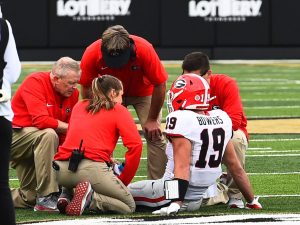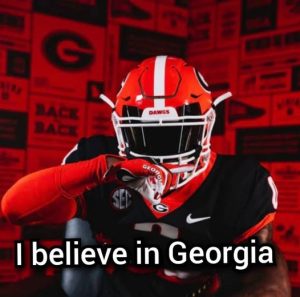
New Everton away shirt puts them back in the pink but Blues once saw red over such kits
Everton’s new away kit is the latest pink shirt from the club over the past 31 years after their first one of the modern era in 1992 caused a stir
Everton are back in the pink with their new away kit becoming the latest in a sequence of such change strips deployed by the club over the past 31 years.
There was controversy when the Blues adopted the colour for the first time in the modern era in 1992 but after the kit proved hugely-popular, Everton have gone back to using various shades of pink on several jerseys since. The 2023/24 season version from hummel which will be worn for the first time in Everton’s inaugural domestic friendly of the summer against Wigan Athletic at the DW Stadium on Saturday (2pm kick-off) is officially being called coral but after last term’s distinctly lighter hue, described as being ‘rosebloom’ it’s a throwback to the salmon and navy sported in the early 1990s.
When Everton first decided to use the colour a generation ago, it caused quite the stir as English football was a very different beast back then and the newly-formed Premier League was not the diverse, multicultural, global product it is today. Sky Sports, who had obtained the television rights for matches, proclaimed in their adverts: “It’s a whole new ball game” and although they brought gimmicks such as fireworks, cheerleaders and giant inflatable sumo wrestlers to their early live games, in truth, other than green shirts for referees and Premier League badges on the players’ sleeves, there had been no radical overhaul.

Football’s greatest alteration that summer, the introduction of the back-pass rule, had nothing to do with the Premier League but while in time the game would evolve into something very different, not much appeared to have immediately changed overnight with the words “Premier League” not even mentioned in Ken Rogers’ ECHO match report for the Blues first game in the competition, a 1-1 draw at home to Sheffield Wednesday. Everton had an all-white playing staff at the time and Polish international Robert Warzycha, a substitute against the Owls was the only non-British player in their matchday squad.
Regardless of what it was called, English top flight football was still learning how to be a ‘family friendly’ day out at this time and just 27,687 watched Everton’s inaugural Premier League fixture – a mere 15,197 saw their final home game of the season against Wednesday’s neighbours Sheffield United – and it was against this backdrop, in a sport still seeped in old-school seemingly ‘macho’ values of heavy drinking for ‘team bonding’ and midfield enforcers like Vinnie Jones on the prowl, that the Blues took the bold move of adopting a colour which had become associated with girls during the 20th century.
Pink might have enjoyed a long-standing association with football in Liverpool, along with several other cities, because of the colour used for special editions of the newspaper carrying match reports, but the prospect of professional players being decked out in it was still a novel concept.
Ken Rogers broke the news on June 1, reporting: “Everton will be in the pink next season – turning back the clock in Goodison Park’s centenary year. The club have produced a special ‘centenary’ kit which mirrors a strip they wore in their early days.

“The shirts will be salmon pink with navy stripes and the shorts navy with pink trimmings.” It was also noted that Howard Kendall’s side would wear the kit for Goodison Park’s centenary match against German outfit Borussia Moenchengladbach on August 8.
The colour scheme was actually based on some of Everton’s early home kits before the now iconic royal blue jersey, white shorts combination was finally settled upon in 1901. The marvellous website historicalkits.co.uk shows that Everton wore pink and white halved shirts between 1882-84 and pink shirts with white sleeves in 1886-87.
However, the centenary ‘salmon’ hue reflected the colour worn by Everton’s first ever title-winning side in the 1890/91 season, a jersey now replicated by retro shirt manufacturers TOFFS and worn by a player on a tiled mosaic discovered at the Sandon Hotel in 1986, which now hangs on the wall at Goodison Park. Still playing at Anfield, Everton became the first team to lift the League Championship trophy as Preston North End, champions for the Football League’s first two years, had to make do with a flag.
Everton then changed to a deeper, some might say ‘ruby’ shade for what proved to be their final season at Anfield before switching to a ‘Manchester City style’ sky blue when they crossed Stanley Park to Goodison, England’s first purpose-built football ground, in 1892. In truth, that 1891/92 shirt looks distinctly red to many eyes and while that wasn’t a problem back then – Liverpool FC wouldn’t even be formed until the following season and even then they played in blue and white and tried to call themselves ‘Everton’ – given the tribal nature of modern football rivalries, the prospect of the Blues ever sporting the colour associated with their neighbours’ nickname has become taboo.
Those who ‘know their history’ will point out that proud Welshman Neville Southall wore a red shirt as Everton’s goalkeeper on the night the club secured the European Cup-Winners’ Cup in 1985 and it wasn’t a one off occasion either as he also wore red in matches against Sheffield Wednesday when they wore a green away kit at Goodison Park later in the decade. However, it was the feeling that the Blues ‘salmon’ shirts were too close to Liverpool red that upset some Evertonians back in 1992 because as Aerosmith sang: “Pink, when I turn out the light; pink, it’s like red but not quite.”
Tony Heslop from Waterloo was so incensed he wrote to Tommy Smith’s letters page in the ECHO only to be given an ‘Over the top’ from the columnist – who, for younger readers, also dished out ‘Fair tackle’ or ‘Bounce ball’ verdicts depending on whether he agreed – complaining: “A diehard like yourself would only wear a blue shirt if you lost a bet so why has Everton’s new RED (don’t give me that salmon nonsense) away shirt become the best-selling fashion item on Merseyside?
“Is it simply hordes of teenagers and females wishing to look cool or are they loyal to the point of anything connected with the club? Please reassure me that I am one of thousands who wouldn’t be seen dead in red and who resent any tampering with the famous blue kit – I hated the ‘Lineker’ 1985/86 kit too.”
The former Liverpool hard man offered little sympathy though, replying: “Football fans these days are dedicated followers of fashion. They like these colourful shirts, so why make an issue of it. As for the ‘red link’ with Everton, I suppose you could say they have finally seen the light, but then Anfield was their home ground 100 years ago!”
There you have it, if even ‘The Anfield Iron’ couldn’t find fault with a pink kit for Everton, no wonder it’s proven to be such a popular, reoccurring theme for the past three decades with various incarnations from Puma (2001/02); Le Coq Sportif (2009/10 & 2010/11); Umbro (2019/20) and hummel (2022/23) with first their paler shade and now a bolder hue for 2023/24.







